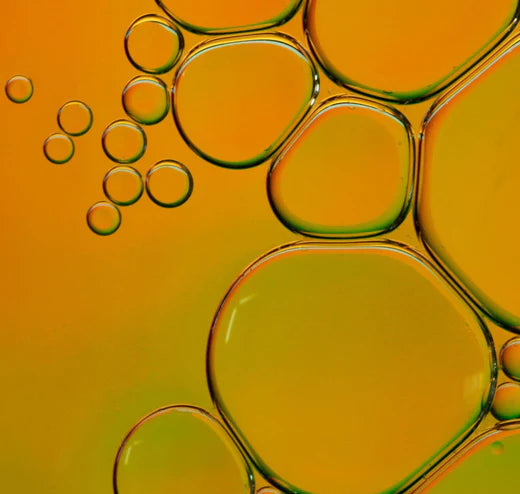Nothing good lasts forever, and PFAS, also known as forever chemicals, are decidedly bad.
These nasty synthetic compounds are found in countless industries, household products, and — most alarmingly — our drinking water. Once they find their way into your system, they’re extremely difficult to remove. The scariest part? Most people have no idea they are ingesting PFAS on a regular basis — or realize that whatever water filtration system they are using is likely letting these forever chemicals pass through with ease.
Wisewell uses a reverse osmosis filter to get rid of PFAS when your pitcher filter can’t. By the end of this article, you’ll learn why PFAS are so dangerous, and how Wisewell can ensure your every sip is pure water — and nothing else.
What Are PFAS?
PFAS (per- and polyfluoroalkyl substances) are a class of synthetic chemicals that repel water and fat molecules in order to make manufactured products resistant to heat, water and stains. The first PFAS were invented in the 1930s and used to create nonstick and waterproof coatings; now, PFAS can be found in cleaning products, non-stick cookware, Teflon, stain- and water-resistant sprays, and elsewhere.
Sure, you can just avoid these products. But more insidiously, PFAS make their way into our bodies through our water supply — leaking in from landfills, factories, and military bases.
The problem: because PFAS are designed to resist the elements, they don’t break down naturally in the environment or the human body. Instead, they build up over time. That’s why they’re called “forever chemicals.” PFAS even pass through the placenta during pregnancy and through mothers’ milk when breastfeeding — so each generation has more and more PFAS in their bodies, to dangerous effect.
PFAS And You
Scientists have found PFAS affect “every major organ in the human body.” Peer-reviewed scientific studies have shown that exposure to PFAS can:
- Increase your risk of cancer, like prostate, kidney, and testicular cancer
- Reduce your immune system’s ability to fight infections and your body’s response to vaccines
- Mess with your hormone and cholesterol levels
- Cause thyroid disease
- Lower your sperm quality
- Cause obesity
- Make it harder to get pregnant
- Cause developmental issues in children, like low birth weight, bone variations, and behavioral changes
And that’s just a small sample of potential health problems — there are thousands of different PFAS, many of which still have unknown effects.
PFAS Are Everywhere
PFAS have been detected in the water supplies of every U.S. state. In 2021, the U.S. Environmental Protection Agency (EPA) identified more than 120,000 U.S. industrial facilities that may be exposing people to PFAS. Nearly all Americans have PFAS in their blood — including newborn babies. And a 2018 EWG report found that up to 110 million Americans could be drinking PFAS-contaminated water. PFAS have even been found in the bloodstream of Arctic polar bears.

Why Haven’t You Heard About PFAS?
PFAS manufacturers have known about these health effects for decades and kept it hidden. Industry-sponsored animal studies found these health effects as early as 1978, but manufacturers didn’t publish any of the studies or tell the EPA until 2000. In fact, documents found in a lawsuit against chemical manufacturer 3M show they planned to selectively release studies on PFAS, creating the misleading idea that PFAS were harmless. As a result, the U.S. is only just beginning to regulate chemicals that have been hurting us for over half a century. The U.S. still has no federally enforceable standard for PFAS in drinking water, and the EPA’s health advisory level for PFAS in drinking water is more than thirty times higher than the stricter European limit.
Meanwhile, chemical companies have been settling PFAS-related litigation for decades. Just in 2021, DuPont and two related companies settled one such lawsuit for $4 billion.
So, how do we combat a set of chemicals that are dangerous, largely unregulated, and everywhere?
Pitcher Filters Can’t Fight PFAS
There’s a good chance you already have a pitcher filter in your fridge. Unfortunately, those don’t catch PFAS. They use activated carbon filters, which work by chemically bonding with chemicals to remove them from water. But PFAS contain carbon-fluorine bonds that are very strong — often too strong for activated carbon filters to remove. Activated carbon filters mostly just remove excess chlorine from your water.
How Wisewell Can Help
Wisewell machines use a reverse osmosis filter, which uses pressure to push water through a semipermeable membrane. Think of it like a super tiny sieve: the contaminants can’t fit through the membrane’s tiny pores, while the uncontaminated water passes to the other side, separate from its contaminants. Researchers at Duke University found that while activated-carbon filters, like Brita, were inconsistent in their ability to filter PFAS, reverse osmosis filters consistently reduced PFAS levels by 94% or more.
If this process sounds familiar, it may be because it is often implemented in whole-house or under-sink filtration systems — but unlike those, Wisewell requires no installation or professional maintenance. All you need to do is pick a spot in your home, plug it in, and begin enjoying great-tasting, PFAS-free water.
Yes, forever chemicals are scary; but they can be dealt with. You can stop PFAS in their tracks — as long as you think before you drink.





